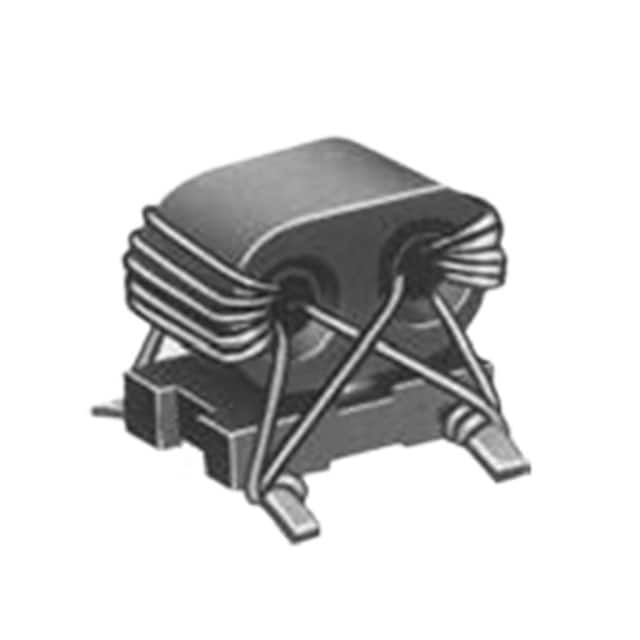Ⅰ. Relays
Ⅱ. Electrical Characteristics of Relays
Ⅲ. Physical Characteristics of Relays
A relay is an electrical switch that is operated by an electromagnet. It is used to control the flow of electricity in a circuit. A relay consists of a coil of wire and a movable armature that is connected to one or more electrical contacts. When the coil is energized, it creates a magnetic field that pulls the armature, causing the contacts to open or close.

Relays are commonly used in a variety of applications, including industrial control systems, automotive systems, and home automation. They are particularly useful in situations where high voltage or high current loads need to be switched on or off, as they provide a safe and reliable means of control.
Relays can be classified into different types based on their construction and operation. The most common types of relays include electromechanical relays, solid-state relays, and reed relays. Electromechanical relays use a physical moving part to make or break the circuit, while solid-state relays use semiconductor devices to switch the circuit. Reed relays use magnetic fields to activate reed switches that open or close the contacts.

The choice of relay depends on the specific application requirements, such as the voltage and current ratings, contact configuration, and operating conditions. Relays can be customized for a variety of applications, including time delay relays, latching relays, and thermal relays.
Relays are an essential component in many electrical systems, providing a safe and reliable means of controlling the flow of electricity in a circuit.
Electrical Characteristics of Relays
The electrical characteristics of relays are an important consideration when selecting a relay for a specific application. The main electrical characteristics of relays include the following:
Contact Rating: This refers to the maximum voltage and current rating that the relay contacts can handle without damage. The contact rating is an important factor to consider when selecting a relay for a particular application.
Coil Voltage: The coil voltage is the voltage that is required to energize the relay coil and activate the contacts. The coil voltage must match the voltage of the control circuit.
Contact Resistance: This is the resistance of the relay contacts when they are closed. Low contact resistance is desirable to minimize voltage drops across the contacts.
Insulation Resistance: This is the resistance of the insulation material between the relay contacts when they are open. High insulation resistance is important to prevent leakage currents and to ensure the safe operation of the relay.
Operating Time: This is the time it takes for the contacts to close or open after the relay coil is energized or de-energized. The operating time is an important consideration for applications that require fast switching.
Release Time: This is the time it takes for the contacts to return to their normal state after the coil is de-energized. The release time is an important consideration for applications that require precise timing.
Contact Arrangement: This refers to the configuration of the contacts, such as normally open (NO), normally closed (NC), or changeover (CO) contacts. The contact arrangement must match the requirements of the application.
The electrical characteristics of relays are critical to ensuring reliable and safe operation in electrical systems. Careful consideration of these characteristics is essential when selecting a relay for a particular application.
Physical Characteristics of Relays
The physical characteristics of relays are an important consideration when selecting a relay for a specific application. The main physical characteristics of relays include the following:
Size: Relays are available in a range of sizes, from small signal relays that can fit on a PCB to larger power relays that may be several inches in size. The size of the relay should be chosen to fit the space available in the application.
Mounting: Relays can be mounted in a variety of ways, including through-hole mounting, surface mounting, and panel mounting. The mounting style should be chosen to fit the requirements of the application.
Enclosure: Some relays are enclosed in a protective housing to protect the contacts and coil from damage. The type of enclosure can vary, including open-frame relays, sealed relays, and hermetically sealed relays. The enclosure type should be chosen to provide adequate protection for the relay in the application.
Contact Material: The contact material is important to ensure reliable switching of the circuit. Common contact materials include silver, gold, and platinum. The contact material should be chosen based on the specific requirements of the application.
Contact Configuration: The contact configuration refers to the number and type of contacts on the relay, such as single-pole, double-pole, and triple-pole contacts. The contact configuration should be chosen to meet the requirements of the application.
Environmental Conditions: The environmental conditions in which the relay will operate are important to consider. Factors such as temperature, humidity, and vibration can affect the performance and reliability of the relay. Relays with special environmental ratings may be required for extreme conditions.
The physical characteristics of relays play an important role in ensuring reliable and safe operation in electrical systems. Careful consideration of these characteristics is essential when selecting a relay for a particular application.
标签:relays



